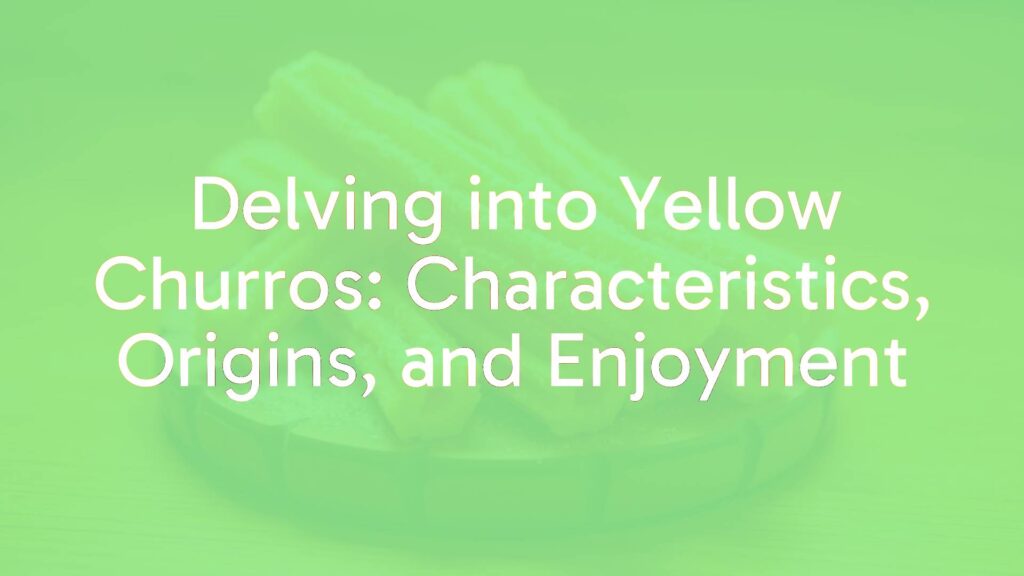Understanding Yellow Churros
Yellow churros are a vibrant and distinctive variation of the beloved fried pastry, easily recognized by their golden-yellow hue. While they follow the classic principles of churro-making, these churros set themselves apart both visually and in flavor profile, offering new experiences for churro enthusiasts and culinary explorers alike.
Defining Features of Yellow Churros
The most striking characteristic of yellow churros is undoubtedly their color. This signature yellow tone may come from the use of ingredients like extra egg yolks, cornmeal, or flavoring agents such as turmeric or saffron. These additives not only affect the appearance but also subtly influence the overall flavor and texture, imparting a richer, sometimes slightly earthy taste compared to traditional churros.
In texture, yellow churros maintain the classic crispy exterior and soft, airy interior that churros are famous for. Their visual allure makes them particularly appealing for festive gatherings or occasions where presentation is key.
Historical and Regional Background
While the classic churro traces its origins to Spain and Portugal, yellow churros represent an evolution influenced by regional ingredients and culinary customs. In various Latin American countries, bakers began experimenting with naturally yellow-hued ingredients, creating these colorful treats that have since gained local cultural significance. Whether for holidays, festivals, or street food markets, yellow churros often stand out as an attractive alternative to their more traditional counterparts.
Essential Ingredients
The foundational components of yellow churros typically include flour, water, salt, and a fat such as butter or oil. What sets them apart is the addition of yellow-tinting ingredients, which might range from:
- Extra egg yolks for richness and color
- Cornmeal or maize flour, particularly in some South American adaptations
- Turmeric or saffron, lending subtle flavors alongside deep color
After the dough is mixed and piped, it is fried until crisp, then traditionally dusted with sugar or a cinnamon sugar blend.
Noteworthy Variations and Ingredient Swaps
Yellow churros come in several imaginative forms. Some bakers incorporate sweet fillings like vanilla custard or citrus creams that complement the warm appearance and flavor. Others infuse the dough with hints of lemon zest or utilize natural food dyes for an intensified yellow effect. For those seeking dietary adjustments, gluten-free flours or plant-based milks may be used, with yellow coloring still achievable through the careful inclusion of turmeric or plant-based food colors.
Popular Serving Suggestions and Pairings
These golden treats are versatile, lending themselves well to both classic and modern presentations. Serve yellow churros as is, freshly fried and sprinkled with sugar, or pair them with rich hot chocolate, dulce de leche, or even citrus-infused sauces to accentuate their unique flavors. For festive occasions, consider offering them alongside fruit compotes or a scoop of vanilla ice cream. Beverages such as spiced hot cocoa, strong coffee, or even chilled horchata work beautifully to complement their distinctive profile.
Conclusion
Yellow churros encapsulate both tradition and innovation, inviting eaters to savor a familiar delicacy in an unexpected form. Their brilliant color, varied flavor options, and adaptable preparation methods ensure they occupy a beloved place at tables and celebrations wherever they are enjoyed.

